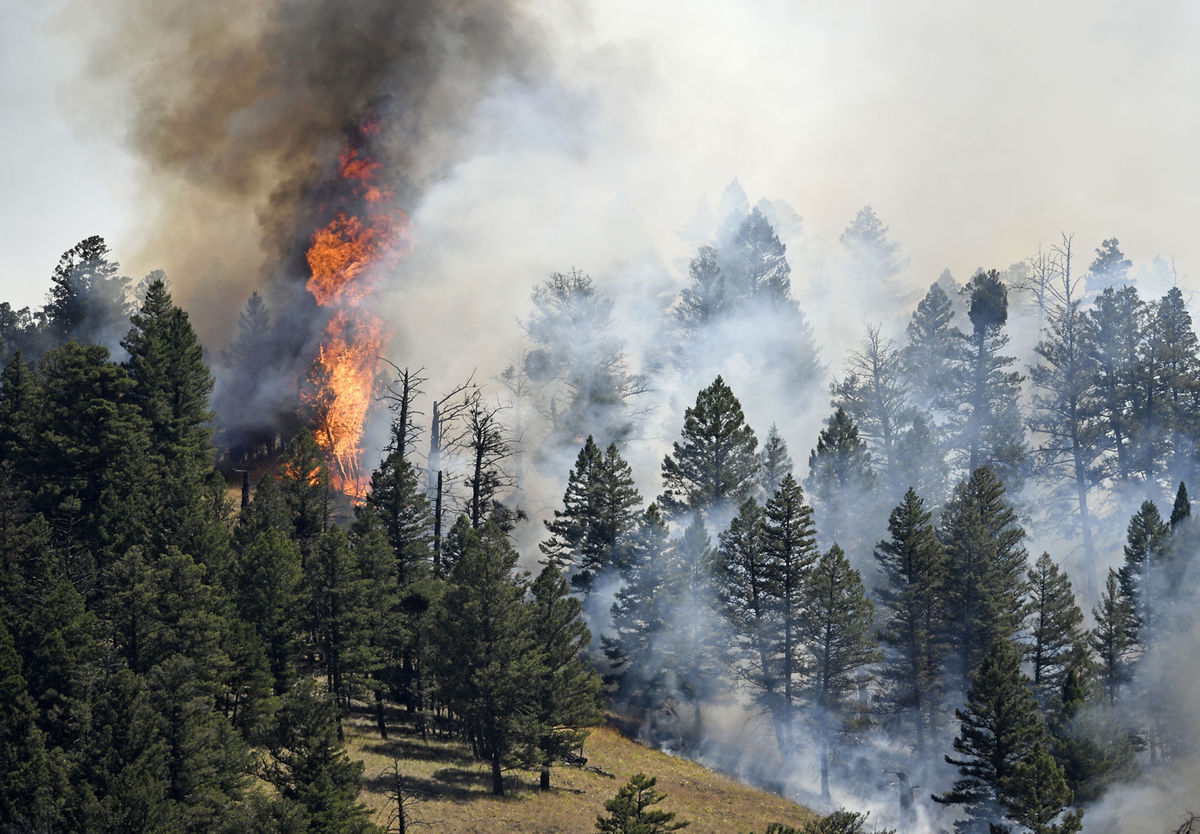Montana’s wildfires are part of growing national emergency, should be treated like other natural disasters
Posted: August 10, 2017Source: The Missoulian By TOM BAUER, Missoulian

A tree goes up in flames as the Goat Creek Fire burns about one mile east of Rock Creek Road. Rock Creek Road is closed to all but local traffic south of Ekstrom’s Stage Station to about mile marker 45.
TOM BAUER,Missoulian
Montana’s Wildfires Should Be Treated Like Natural Disasters
The nation’s worst wildfires are burning in Montana. Thousands of acres have been scorched, and thousands more will be lost before the last flame is doused this season.
Already more than a dozen homes have been destroyed, and the running total of property damage is climbing. The smoke is harming air quality in many communities, including Missoula. Worst of all, a firefighter’s life has been lost.
Wildfires in Montana are a certainty we anticipate every summer. The only question is how bad the fires will be – and how much they will cost us.
Beyond Montana, wildfires are a growing national emergency. Yet the United States government continues to manage them, and fund them, as though they were an unforeseen, temporary inconvenience.
It may not mean much to the nation’s leaders in Washington, D.C., who hail from more urban parts of the country, but the four fires that make up the Lodgepole Complex in eastern Montana have torched more than 270,000 acres and 16 homes. At last count, some 600 firefighting personnel were working to contain the blaze.
Meanwhile in western Montana, a single fire in Mineral County ballooned by 1,000 acres in one night last week and became the nation’s No. 1 priority fire. The Sunrise fire, while not as large as those in eastern Montana at more than 4,000 acres, is proving a challenge to contain as it threatens dozens of homes. Evacuation orders were issued for residents of Sunrise and Quartz Flats, and other neighborhoods were told to be prepared to evacuate as well.
With 23 active fires currently requiring state and U.S. Forest Service attention in Montana, Gov. Steve Bullock officially declared a fire emergency last Sunday. The governor’s executive order means Montana’s general fund may be tapped to help cover some costs, which is important because the Legislature approved a plan this year to use up to $30 million of the state’s $65 million fire fund to help shore up the overall budget.
The Montana Department of Natural Resources and Conservation alone estimates it has spent between $5 million and $10 million fighting wildfires so far this year. If this turns out to be as bad a year as 2013, when Montana spent $57 million on fire suppression, the state may have no money left to cover next year’s firefighting costs.
Given the growing urgency of the situation, Montanans were outraged to learn this week that the Federal Emergency Management Agency initially rejected the state’s request for firefighting aid on the Lodgepole Complex. The FEMA grant is expected to cover 75 percent of fire suppression costs.
On Monday, U.S. Sen. Jon Tester called out the agency and his fellow members of Congress on the floor of the Senate, arguing, “Fires are a devastating natural disaster and should be treated that way.”Tester asked that FEMA Administrator Brock Long explain why Montana’s request for help was rejected, reverse its rejection and in fact, provide additional emergency resources to help firefighting efforts in Montana.
A few days later, on Thursday, U.S. Sen. Steve Daines and U.S. Rep. Greg Gianforte released a joint letter to Long also requesting that his agency reconsider its rejection of federal fire management assistance for Montana, pointing out that, “According to the Bureau of Land Management, 124,202 acres burned in 2013, which led to the declaration of a state of emergency. This year fires have already burned almost three times that amount of land.”
Later that day, FEMA relented and announced that it would, in fact, grant emergency funds for the Lodgepole Complex fires.
Tester, a Democrat, and Daines, a Republican, have long been in agreement on the need to change the way the nation pays its wildfire costs. They both, along with former Congressman and current Secretary of the Interior Ryan Zinke, signed on as cosponsors of proposed legislation to treat catastrophic wildfires like other natural disasters and allow the U.S. Forest Service to focus more on wildfire prevention, instead of spending more than half its budget on wildfire suppression. Alas, the Wildfire Disaster Funding Act, despite racking up more than 150 cosponsors, has yet to make it out of the subcommittee.
By now it should be clear to even the most uninformed member of Congress that the current system is headed for collapse. Just as hurricanes and floods are considered disaster emergencies in some parts of the country, so too should wildfires that threaten neighborhoods and livelihoods be met with swift action from the nation’s emergency response agencies. This is not just Montana’s problem.
According to the National Interagency Fire Center, more than 4,200 square miles have been burned by wildfires in the United States so far this year, an area approaching the size of Connecticut – and 30 percent larger than the total number of square miles burned by the same date last year.
Wildfires are growing in size and intensity every year. Individual states and the Forest Service should not be left to deal with natural disasters on their own; it’s bad policy and even worse financial management.
States like Montana simply don’t have enough money to cover the ever-increasing costs of protecting our communities. And every dollar the Forest Service is forced to spend on putting out fires is a dollar that would have been better spent preventing fires in the first place.
As fires rage all around us, Montana is a blazing example of the need to manage – and fund – wildfires like the natural disasters they are.
